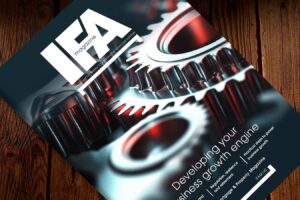Douglas Lawson, Director at Amati Global Investors, looks at the current prospects for AIM stocks
Inheritance tax (IHT) planning is all about saving tax. Assets that qualify for business property relief (BPR) are exempt from IHT, potentially saving the deceased’s beneficiaries a 40% tax bill.
For this reason, the starting point for considering a specific BPR qualifying asset must be: is my (realistic) maximum loss on this investment less than 40%.
One such BPR qualifying asset is unquoted shares, including those listed on the Alternative Investment Market (AIM) of the London Stock Exchange. Portfolios of AIM shares have been an increasingly popular destination for IHT planning. It is difficult to know how much money has gone into AIM IHT portfolios due to the lack of disclosure from some providers of the service but the best estimate we can find is from Intelligent Partnership, which puts the number at £750 million.
Avoiding losses
If the starting point is avoiding losses, rather than making profits, it is logical to assume that investment managers will seek out the least risky shares listed on AIM.
Most would interpret ‘least risky’ as the largest, most liquid shares on AIM. The largest share on AIM is ASOS, the online clothing retailer, which is capitalised at £3 billion and trades an average of £27 million of stock every day. Even if every AIM IHT manager held a 5% position in ASOS, the combined holding would be worth £37 million (5% x £750 million of AIM IHT assets under management) and could be traded (theoretically) in under two days. On this basis, ASOS certainly ticks that size and liquidity box.
Below ASOS, the AIM top 10 was made up of the following stocks as of 3 June 2016: GW Pharma (a biotech specialising in cannabinoids across a range of therapeutic areas); ABCAM (the online sale of antibodies); Hutchison China Meditech (a diversified, Chinese healthcare business); Dart Group (operator of the Jet2 airline and holiday business); James Halstead (a manufacturer of flooring products); Fever Tree (a producer of premium tonics and other drinks mixers); Breedon Aggregates (a supplier of asphalt and concrete); Plus500 (an online platform for trading contracts for difference); and Burford Capital (a litigation funding business).
List of stocks
This is an interesting list of stocks, all of which we believe qualify for BPR. Two of these stocks (GW Pharma and Hutchison China) are loss-making but the other eight stocks trade on a mean forward price/earnings ratio of 27.5x.
To prove that these are not anomalies, we extend this list to encompass the next 10 largest AIM stocks that quality for BPR and we find that, excluding one outlying stock, the aggregate rating falls slightly, but only to 27.0x price/earnings ratio. By most measures, this is an expensive price/earnings ratio.
In certain circumstances, a high rating can be justified by the very high growth prospects of a business. Fever Tree, for instance, has a price/earnings ratio of 43.0x but 2016 earnings per share (EPS) is expected to be 44% higher than 2015. However, several of these stocks with high ratings have low growth prospects. James Halstead is rated at 24.6x but EPS growth is expected to be 5.9%. Under normal circumstances, this would be considered expensive, even for a company with the undoubtedly high qualities of James Halstead.














